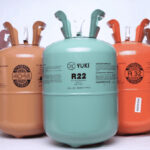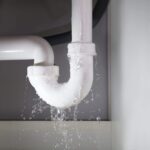
The Different Types of Dental Cleaning Available
Did you know you have thousands of bacteria in your mouth that live on your teeth and consume the same foods you do? The good news is that excess germs in your teeth may be eradicated with frequent brushing, flossing, and dental cleanings.
It is widely recommended that individuals visit their local dental office twice a year for a dental exam and cleaning to prevent bacteria from developing and causing dental concerns such as tooth decay and gum disease. Dental examinations allow your dentist to examine the condition of your teeth and gums, whilst expert teeth cleanings remove extra plaque and tartar. Because germs dwell in tooth plaque and tartar, this eliminates a significant amount of bacteria.
Your dentist will conduct one of four types of dental cleanings depending on the quantity of plaque and tartar on your teeth:
1. Dental Prophylaxis Cleaning
Prophylactic dental cleanings are used to clean healthy teeth to keep them free of tooth decay and gum disease. Prophylaxis cleanings use a dental scaler or a water stream in removing plaque and tartar from the front, back, and sides. Most dental patients simply need a prophylaxis cleaning, especially if they have been practising regular dental care and attending semi-annual dental checkups.
2. Scaling and Root Planing
Scaling and root planing cleanings are effective in treating gingivitis and periodontitis. This is done by cleaning both the teeth and the gum pockets. Gingivitis deep cleanings are often completed within a single dental session. On the other hand, periodontitis deep cleanings may necessitate numerous sessions and local anaesthetics, depending on the severity. Scaling removes plaque and tartar from the tooth’s surface and gum pockets from gum disease. This not only removes germs but also helps to minimise gum irritation. Root planing is the procedure of flattening the dental roots, which helps to reattach the gums to the teeth and eliminate gum pockets.
3. Cleaning for Periodontal Maintenance
Periodontal maintenance cleanings are also intended to treat gum disease. They remove extra plaque and tartar from the teeth and gum pockets, then smooth out the roots if necessary, similar to scaling and root planing. The key difference between periodontal maintenance and other dental cleanings is that they are generally conducted more often. This is due to the fact that gum disease is progressive and will worsen if not treated adequately.
4. Cleaning of Gross Debridement
Gross debridement treatments are the most thorough of teeth cleanings, meant to remove large quantities of plaque and tartar from teeth. These are often persons who struggle to maintain an oral care regimen or have avoided the dentist for an extended period. Because plaque hardens into tartar, and huge quantities of tartar are very hard, an electrical instrument is utilised during extensive debridement cleanings to release tartar. After removing excess plaque and tartar, a prophylaxis cleaning is performed to clean the teeth thoroughly.
As you can see, there are several dental cleanings that your dentist may utilise based on what they discover during your dental checkup. While all of these cleanings operate on the same fundamental idea, they each take a somewhat different approach depending on the circumstances.

















